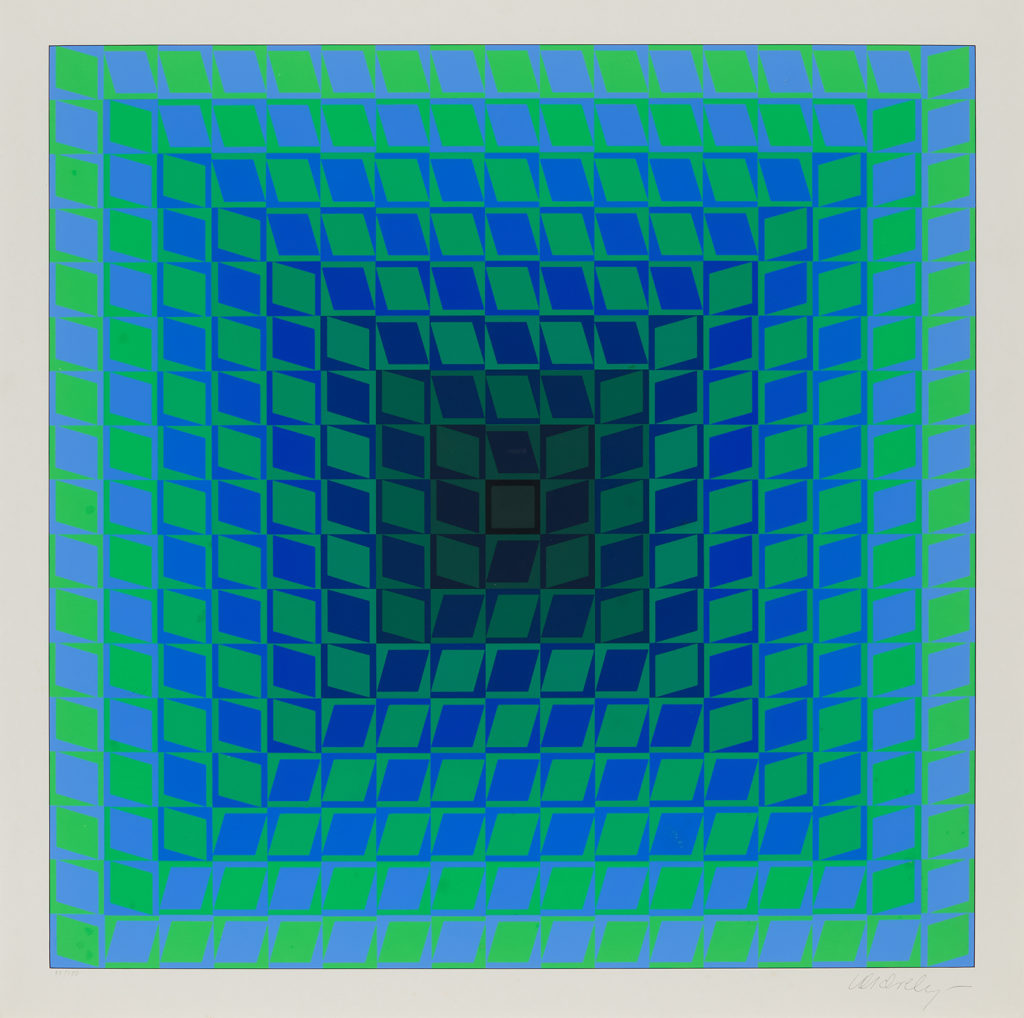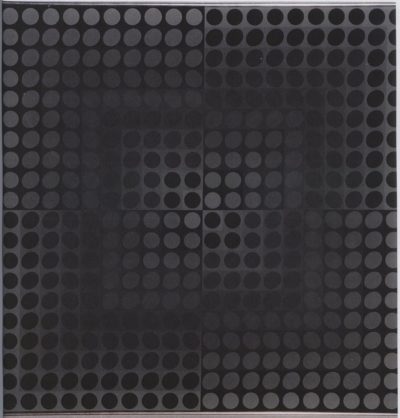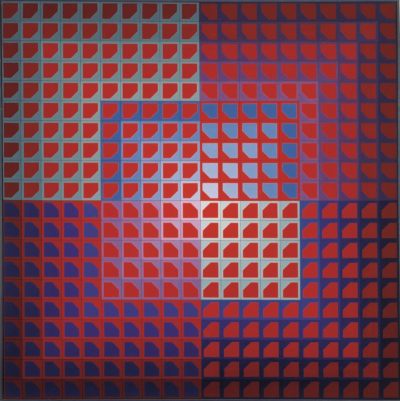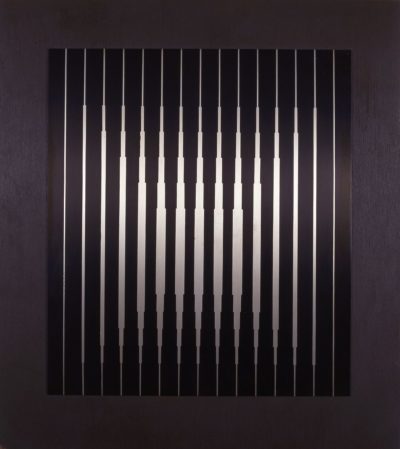Permutation Series (1/8), 1968
Hungarian artist Victor Vasarely was one of the leaders of the Op Art movement in Paris. Like Josef Albers Vasarely was interested in the purity of visual sensation and was totally opposed to the use of narrative in painting. “To experience the presence of a work of art is more important than to understand it” he argued and he used syncopated rhythms and geometric pattern to create optical ambiguity and disorientation, making the viewer question his or her own perception.
Vasarely was deeply committed to the demystification of art production and to increasing access and availability. He advocated the use of technology especially computers in art making as an expression of the age and in the interests of reproducibility. His studio in the 1960s had more in common with an industrial production line than a traditional artist’s work place.
| Medium | Serigraph |
| Dimensions |
Framed, 87 x 87 cm Sheet size, 68 x 68 cm Plate size, 60 x 60 cm |
| Credit Line | IMMA Collection: Gordon Lambert Trust, 1992 |
| Edition | Edition 27/150 |
| Item Number | IMMA.831.001 |
| Copyright | For copyright information, please contact the IMMA Collections team: [email protected]. |
| Tags |



